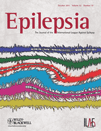Comparative pharmacokinetic analysis of USL255, a new once-daily extended-release formulation of topiramate
Summary
Purpose: To compare the pharmacokinetics of USL255, a once-daily extended-release (ER) formulation of topiramate (TPM), with Topamax (immediate-release TPM) in healthy subjects after oral dosing and evaluate the effect of food on USL255 bioavailability and pharmacokinetics.
Methods: This randomized, single-center, open-label, cross-over design study had three dosing periods separated by 21 days of washout between treatments. Thirty-six volunteers received single doses of USL255 (200 mg) in fasted and fed conditions and two doses of Topamax (100 mg) administered 12 h apart. TPM plasma samples were analyzed by liquid chromatography–mass spectroscopy. Pharmacokinetic parameters were calculated by noncompartmental methods.
Key Findings: USL255 fasted pharmacokinetic parameters [point estimate (90% confidence interval, CI) compared to Topamax] were: relative bioavailability (F´) 91.2% (84–99%), peak plasma concentration (Cmax) USL255/Topamax-ratio 59% (53–65%), time to reach Cmax (tmax) 19.5 ± 7.2 h, accumulation ratio (Rac) 3.9 ± 1.2, effective half-life (t1/2,eff) 55.7 ± 19.9 h, terminal half-life (t1/2,z) 80.2 ± 14.2 h, and peak-occupancy-time (POT) 12.1 ± 4.0 h. Although the F´ and Cmax were unaffected by food, Rac and t1/2,eff increased to 4.9 ± 0.9, and 72.5 ± 15.4 h, respectively. In contrast to t1/2,z, t1/2,eff reflects absorption rate; therefore, USL255’s t1/2,eff was significantly longer than Topamax’s t1/2,eff (37.1 ± 6.5 h).
Significance: Although bioequivalent to Topamax in extent of absorption, USL255 had a slower absorption rate as reflected in its lower Cmax and longer tmax, larger POT and longer t1/2,eff, and similar Rac values to that of Topamax (q12 h). This relative flat plasma profile allows for once-daily dosing with diminished fluctuations in TPM plasma levels. In addition, neither USL255’s peak nor extent of plasma exposure of TPM was affected by food.




